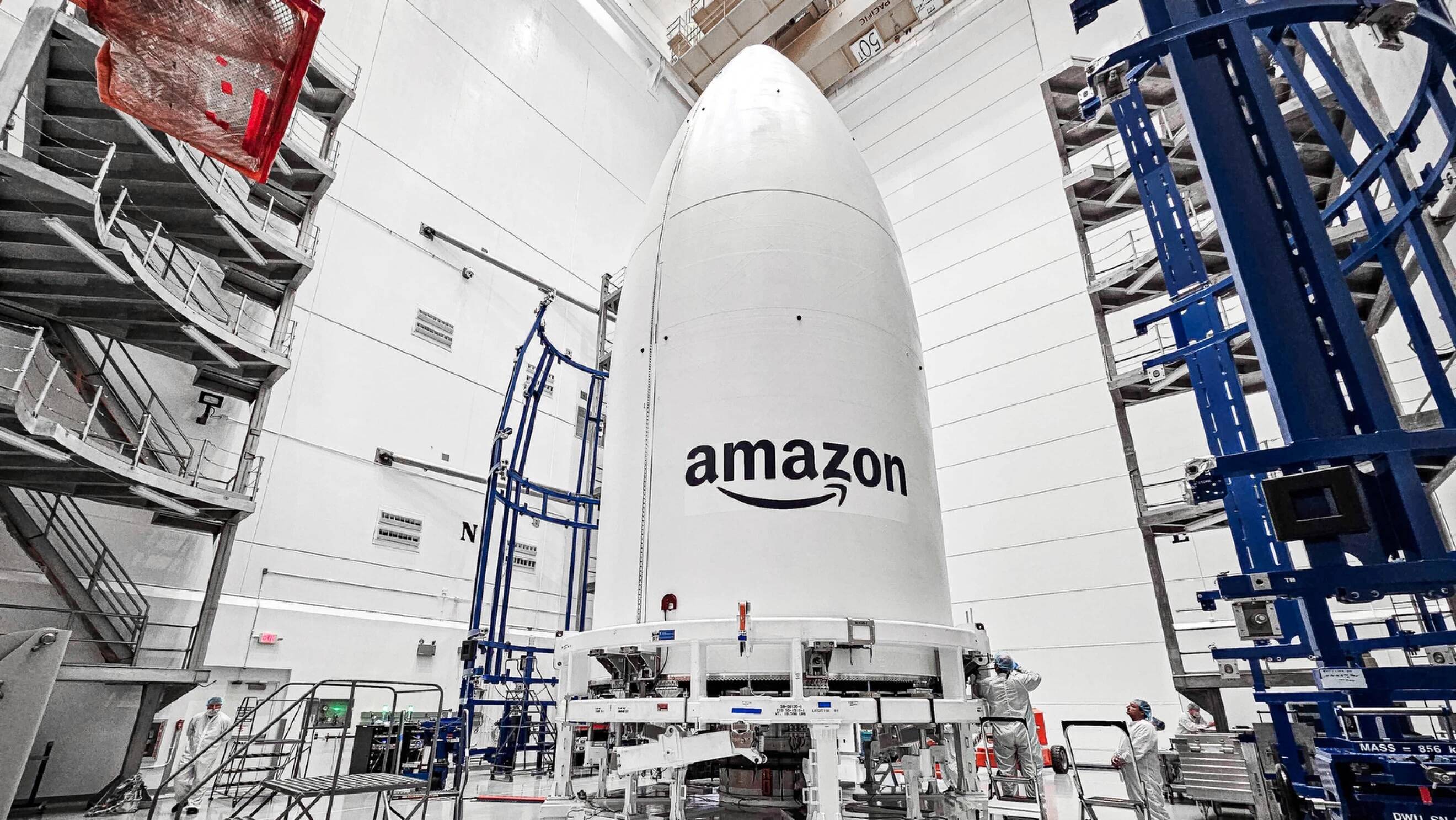Amazon's Project Kuiper Thrusters Deliver Prime Orbit Adjustments

Amazon's custom thrusters are performing well on its prototype Project Kuiper satellites following a series of tests to check if the Hall-effect electric propulsion system works as expected on orbit.
The Kuiper system is designed to operate between 367 and 391 miles (590 and 630 km) above Earth and the satellites are expected to remain within 5.6 miles (9 km) of their assigned altitudes. Drag from the Earth's atmosphere causes the orbit to naturally decay, requiring a bit of oomph from the propulsion system to counteract the effect.
Rajeev Badyal, Project Kuiper's vice president of technology, said: "Our custom thrusters are a prime example of Kuiper innovation, and using them to maneuver safely in space was a critical piece of our Protoflight mission."
The custom design might be innovative, however, Hall-effect thrusters have been around for quite a while. ESA's SMART-1 lunar mission made use of the technology 20 years ago, and Amazon rival SpaceX has long been using the tech in its Starlink constellation.
Hall-effect technology works by using an electric field to accelerate ionized propellant in order to generate thrust. Although usually lacking the same explosive power as chemical engines, the efficiency has proven appealing and the devices are frequently used to maneuver orbiting satellites over lifetimes of multiple years.
The thrusters fitted to the Project Kuiper prototypes are designed to raise the spacecraft to their desired orbits as well as dodge other satellites or debris. They will also be used to de-orbit the satellites in a controlled fashion at the end of their lives.
- ULA's Vulcan Centaur hopes to rocket into Christmas
- Bezos' engineers dream of Blue Ring space platform in orbit by 2025
- Amazon's Project Kuiper satellites prepare for testing after one late Prime delivery
- Two Project Kuiper prototype satellites finally reach orbit
The good news, as far as Project Kuiper is concerned, is that the custom designs worked as expected, and each test returned nominal results. The team said: "This milestone in our Protoflight mission is significant for Amazon and for those in the broader space community advocating for a safer, more sustainable orbital environment.
"The results reinforce Amazon's positions that all satellites above 249 miles (400 km) should include effective maneuvering capabilities and that satellite operators should share information about spacecraft movements to make operations in low Earth orbit (LEO) safer and more predictable."
The protestations regarding responsible behavior in an increasingly crowded orbital space is timely. The Reg can't help but recall events such as 2019's incident in which the European Space Agency was forced to fire the thrusters on its Aeolus satellite in order to dodge an active vehicle from a "mega constellation."
The design of the propulsion system is also expected to cut down on the use of propellant, extending the life of the satellites. And when the time to de-orbit finally comes, the propellant tank is designed to burn up in the atmosphere, further reducing the risk of debris. ®
From Chip War To Cloud War: The Next Frontier In Global Tech Competition
The global chip war, characterized by intense competition among nations and corporations for supremacy in semiconductor ... Read more
The High Stakes Of Tech Regulation: Security Risks And Market Dynamics
The influence of tech giants in the global economy continues to grow, raising crucial questions about how to balance sec... Read more
The Tyranny Of Instagram Interiors: Why It's Time To Break Free From Algorithm-Driven Aesthetics
Instagram has become a dominant force in shaping interior design trends, offering a seemingly endless stream of inspirat... Read more
The Data Crunch In AI: Strategies For Sustainability
Exploring solutions to the imminent exhaustion of internet data for AI training.As the artificial intelligence (AI) indu... Read more
Google Abandons Four-Year Effort To Remove Cookies From Chrome Browser
After four years of dedicated effort, Google has decided to abandon its plan to remove third-party cookies from its Chro... Read more
LinkedIn Embraces AI And Gamification To Drive User Engagement And Revenue
In an effort to tackle slowing revenue growth and enhance user engagement, LinkedIn is turning to artificial intelligenc... Read more

